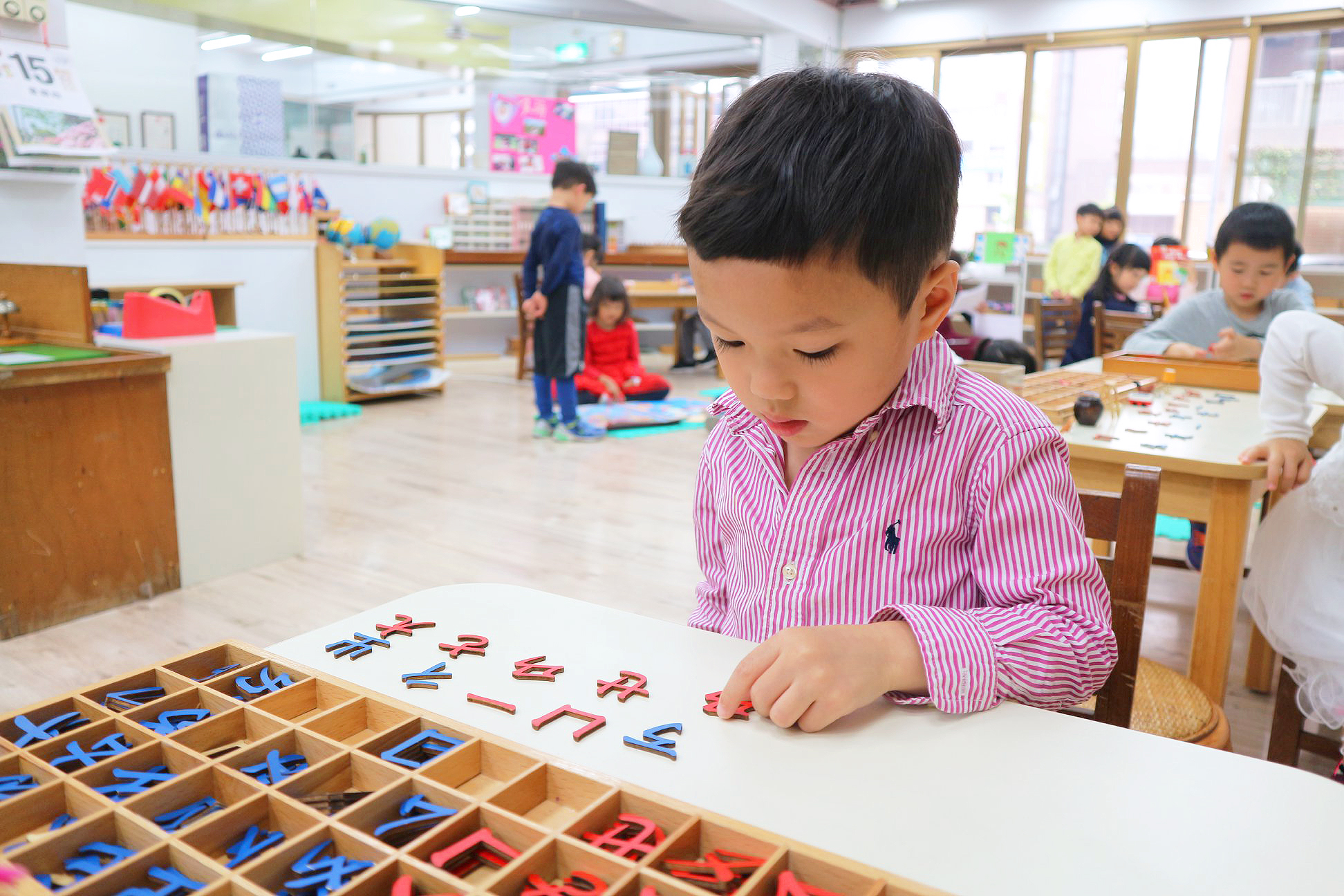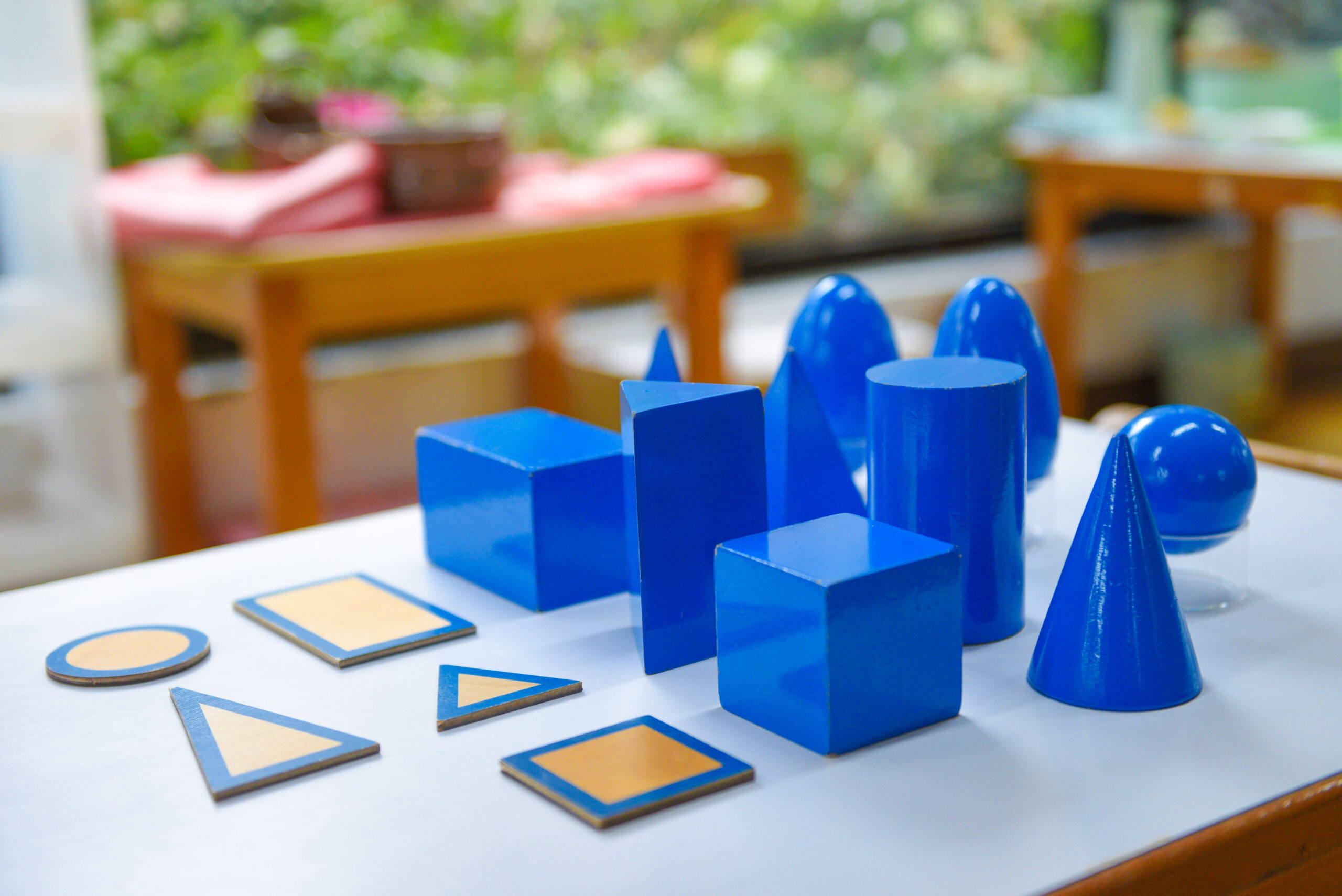教育特色




Montessori Activities
The Montessori learning environment is meticulously designed for children, where they become active discoverers in their own learning process. Through self-discovery, children develop insights that serve as the driving force for lifelong learning.
Montessori firmly believes that “experience is the best teacher,” likening experience to purposeful work.
Children in a Montessori setting do not perceive their work as tedious labor; rather, they engage in meaningful activities that provide a sense of accomplishment and intrinsic reward.
Mixed-Age Environment
Compared to traditional age-segregated classrooms, a mixed-age environment better meets each child’s individual developmental needs. A child may sometimes work alongside older peers, inspiring mutual growth through collaboration; at other times, they may engage with younger children, fostering reciprocal teaching and learning; and occasionally, they interact with peers of the same age. This natural mixed-age setting resembles a microcosm of society, providing children with abundant opportunities to learn how to relate, cooperate, and solve problems with individuals of varying ages and levels of maturity.
Only within a mixed-age classroom structure can children truly experience the freedom to choose work they enjoy, progress at their own pace, work independently, or seek peer collaboration. It is also within this framework that children develop more advanced social skills and a well-rounded character.
The Role of the Teacher
In a Montessori classroom, the teacher’s role encompasses being a guide, observer, and caretaker of the learning environment, enabling children to achieve self-education through their own activities. With skillful and attentive observation, the teacher gently leads children into the joy of their work. The teacher thoughtfully prepares the classroom by introducing materials that are both challenging and engaging, while removing any obstacles that might hinder learning. She demonstrates how to use the materials and encourages children to explore and try independently. By continuously observing the child’s work, the teacher supports them in overcoming difficulties and, when necessary, helps redirect their focus or rekindle their interest.
This unique relationship between teacher and child in the Montessori environment is best captured by a child’s own words: “Help me do it by myself.”
Design of Montessori Materials
Each Montessori material is designed to be sensory-oriented, following a consistent principle that guides children to learn intuitively—from simple to complex, and from concrete to abstract concepts. The design of all materials incorporates a built-in mechanism for self-correction, allowing children to independently identify and correct their own errors without external assistance. This systematic approach to learning ensures success at every stage of development.
This cycle of “competence builds confidence, and confidence fosters further competence” continuously fuels children’s natural curiosity and intrinsic motivation to work and learn.

Montessori Activities
The Montessori learning environment is meticulously designed for children, where they become active discoverers in their own learning process. Through self-discovery, children develop insights that serve as the driving force for lifelong learning.
Montessori firmly believes that “experience is the best teacher,” likening experience to purposeful work.
Children in a Montessori setting do not perceive their work as tedious labor; rather, they engage in meaningful activities that provide a sense of accomplishment and intrinsic reward.

Mixed-Age Environment
Compared to traditional age-segregated classrooms, a mixed-age environment better meets each child’s individual developmental needs. A child may sometimes work alongside older peers, inspiring mutual growth through collaboration; at other times, they may engage with younger children, fostering reciprocal teaching and learning; and occasionally, they interact with peers of the same age. This natural mixed-age setting resembles a microcosm of society, providing children with abundant opportunities to learn how to relate, cooperate, and solve problems with individuals of varying ages and levels of maturity.
Only within a mixed-age classroom structure can children truly experience the freedom to choose work they enjoy, progress at their own pace, work independently, or seek peer collaboration. It is also within this framework that children develop more advanced social skills and a well-rounded character.

The Role of the Teacher
In a Montessori classroom, the teacher’s role encompasses being a guide, observer, and caretaker of the learning environment, enabling children to achieve self-education through their own activities. With skillful and attentive observation, the teacher gently leads children into the joy of their work. The teacher thoughtfully prepares the classroom by introducing materials that are both challenging and engaging, while removing any obstacles that might hinder learning. She demonstrates how to use the materials and encourages children to explore and try independently. By continuously observing the child’s work, the teacher supports them in overcoming difficulties and, when necessary, helps redirect their focus or rekindle their interest.
This unique relationship between teacher and child in the Montessori environment is best captured by a child’s own words: “Help me do it by myself.”

Design of Montessori Materials
Each Montessori material is designed to be sensory-oriented, following a consistent principle that guides children to learn intuitively—from simple to complex, and from concrete to abstract concepts. The design of all materials incorporates a built-in mechanism for self-correction, allowing children to independently identify and correct their own errors without external assistance. This systematic approach to learning ensures success at every stage of development.
This cycle of “competence builds confidence, and confidence fosters further competence” continuously fuels children’s natural curiosity and intrinsic motivation to work and learn.
